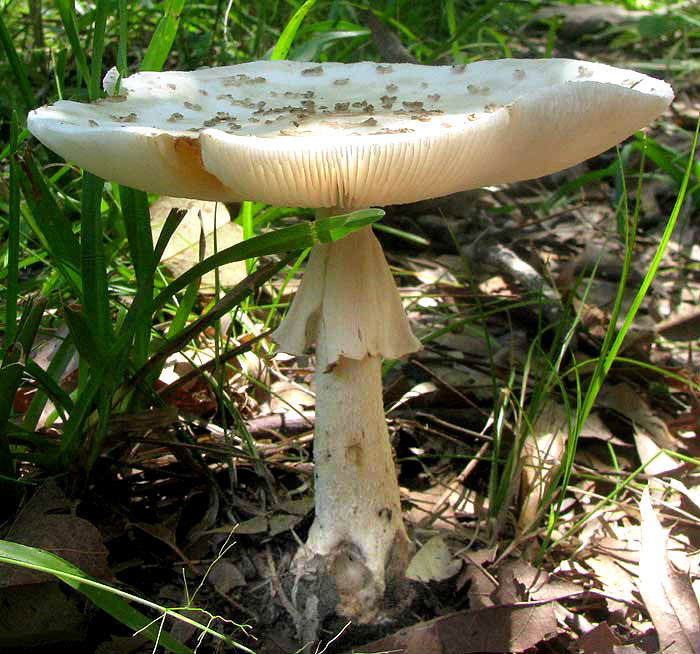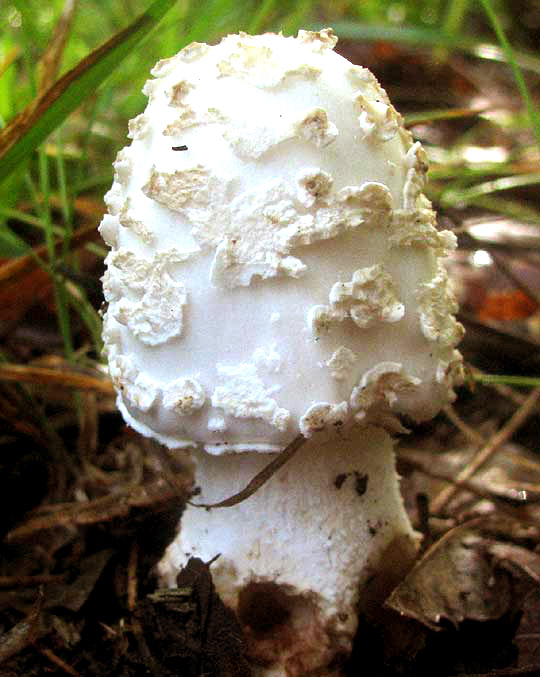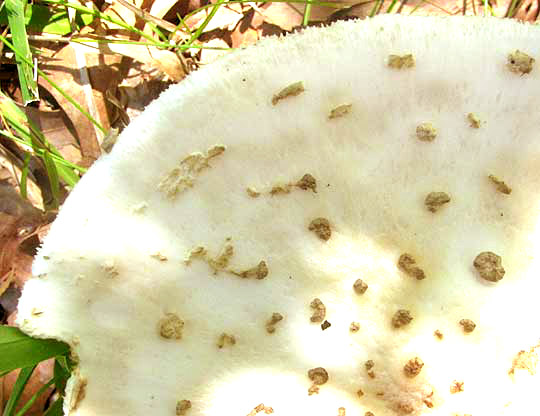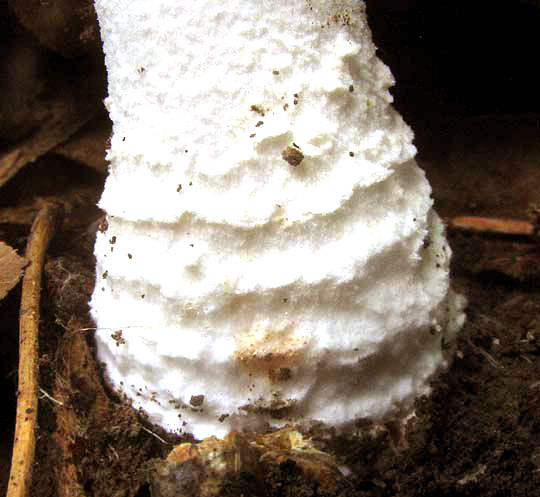Excerpts from Jim Conrad's
Naturalist Newsletter

from the July 29, 2012 Newsletter issued from the woods of the Loess Hill Region a few miles east of Natchez, Mississippi, USA
AMINITA MUSHROOMS AFTER A RAIN
About three days after a particularly heavy rain, in a grassy, shaded spot beside my trailer, six uncommonly large and pretty mushrooms emerged from the ground. Below you can see one soon after its emergence, still not with its "mushroom shape," about 2-½ inches high (6cm):

Two days later that same mushroom was about five inches tall (13cm) with a fully deployed cap, as shown at the top of the page. One spectacular feature of this species is its very well developed, skirt-like "ring," or "annulus," encircling the top of its stem just below the cap. Note the dark "warts" atop the pure white cap. A blade of grass touching the gills from below was coated masses of spores fallen from the gills and their color was white. A closer look at the cap's warts is shown below:

When you have a large, white-spored mushroom with a ring and a warty cap the best bet is that you have an Amanita mushroom -- one of the most famous of mushroom groups because not only are they a delight to see but also because some of the Earth's most deadly species belong to this genus. The killer Destroying Angel, Death Cap and Fly Agaric are Amanitas. However, this was none of those. About 600 Amanita species are recognized worldwide, so I wondered whether I'd ever be able to identify this one.
As it turns out, though I can never be sure without microscopically examining the spores, my trailer-side visitors are graced with such unusual features that with this species I'm fairly confident of the ID. Besides its white spores, the skirt-like ring and the white cap with dark warts, another very distinctive feature is the much-thickened, or "bulbous," base bearing conspicuous circles of scales, as shown on a young individual below:

This is AMANITA COKERI, without any good English name unless we bestow the obvious name of Coker's Amanita. It's mostly a southeastern US species, where it's regarded as common, though it's also known from Idaho and Illinois. Its hyphae form mycorrhizal associations with roots of both hardwoods and conifers. Our Mycorrhiza webpage is at https://www.backyardnature.net/f/mycorhza.htm.
Amanita cokeri is listed as "not edible," which isn't nearly as bad as "deadly poisonous." Some of the most dangerous Amanita species smell bad, but these just have a mild, fungusy odor.